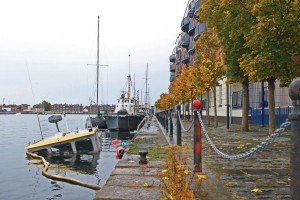
A new document concerning the planning and zoning of the Docklands and South Lotts was approved by Dublin City Council late last year.
The plan, officially titled North Lotts and Grand Canal Dock Planning Scheme, will now become the framework for new building projects across the Docklands area.
The document, a sibling of the master plan produced by the Dublin Docklands Development Authority (DDDA), sets out a vision for the area with the hope to lure in pivotal technological businesses and bring about the establishment of an area that comprises both residential and business complexes within currently vacant land.
“The SDZ [Strategic Development Zone] Planning Scheme puts forward a set of high-level themes geared to highlight those areas that are seen to be part of the strategic answer,” says the document. “The SDZ of course is not a greenfield site; it is a work in progress that is now set to move forward in a somewhat different direction and under new stewardship.”
The plan comes after the planning and management authority for the Docklands was passed to Dublin City Council, who will now oversee individual planning applications without input from An Bord Pleanála, the independent body with oversight of planning developments across the country.
“Because the Docklands area still needs some rejuvenation, a model, similar to the model that existed under the DDDA, would be put in place in the next few years, so the redevelopment of the Docklands area could continue,” said Labour Cllr. Dermot Lacey.
The plan divides the Docklands into specific areas, such as Spencer Dock, Point Village, Grand Canal Dock and Boland’s Mill and stipulates the type of zone, such as residential or business, applicable to each area. The plan also outlines the height bands, which in a lot of cases are considerably higher than the existing bands within the city centre.
The plan also calls for a “new public discourse” on the variety of social and employment challenges faced by the Docklands and surrounding communities. It asks for the involvement of Trinity College and Dublin Port in helping craft what it calls a smart city, which will involve all aspects of these communities and businesses.
“I think it’s a pretty radical plan,” said Fine Gael Cllr. Kieran Binchy. “Basically, it will allow the second phase of the Docklands to begin. The aim of it is to allow development to start again as quickly as possible.”
The plan is the result of the government’s decision in May 2012 to wind up the DDDA which played a pivotal role in the regeneration of the area during the boom years, but came under serious criticism after a Comptroller and Auditor General report called into question their involvement with the former Irish Glass Bottle factory site in Ringsend.
If the plan is adhered to, it could mean we will see the establishment of new city communities – some 2,600 according to the plan – and the creation of new corporate entities, sparking a potential job creation drive in the area.
“It’s to give certainty to developers so when they invest, they know what they’re investing in,” said Cllr. Lacey.
Above: Charlotte Quay today.
By Liam Cahill

